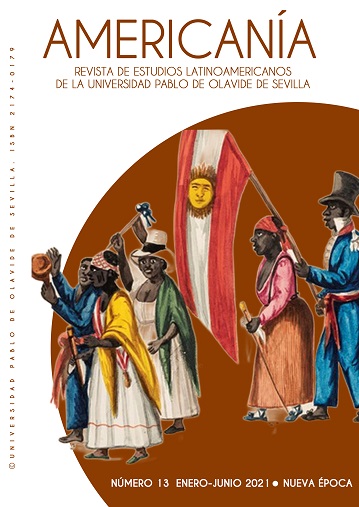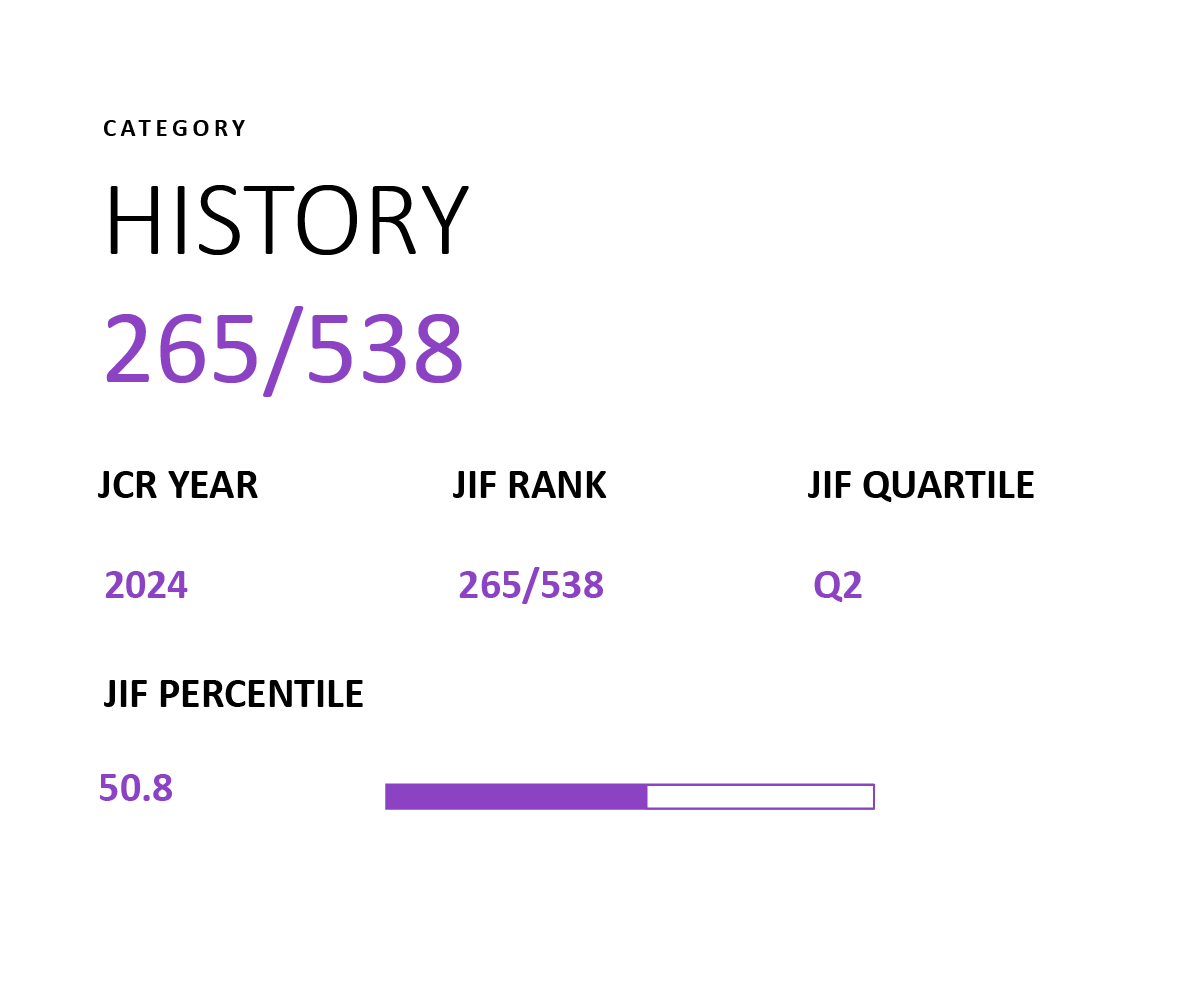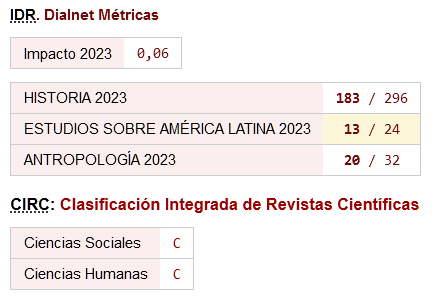"My art speaks for both my peoples"
Elizabeth Catlett's graphics at the Taller de Gráfica Popular (1946-1966)
DOI:
https://doi.org/10.46661/americania.5255Keywords:
Elizabeth Catlett , Taller de Gráfica Popular , IntersectionalityAbstract
Departing from her personal experiences and from her double nationality, American and Mexican, the sculptor and graphic artist Elizabeth Catlett developed a very dynamic concept of identity, nourished by both her lived experiences, and by historical memory. In this paper I study the engravings produced by the artist during her participation with the Taller de Gráfica Popular, focusing on the works in which she represented black American and Mexican indigenous women, pieces with which the artist notably contributed to the expansion of the social preoccupations characteristic of the workshop, in order to also embrace the recognition of the identity of gender, class, and race, as well as of their intersectionality, according to the concept created by the feminist Kimberlé Crenshaw in order to name the crossed perception of the relationships of power and oppression.
Downloads
References
Bateman, Anita, “Narrative and Seriality in Elizabeth Catlett's Prints”, Journal of Black Studies 47, no. 3, 2016, 258-72.
Dufrene, Phoebe, “A Visit with Elizabeth Catlett”, Art Education 47, no. 1, 1994, 68-72.
Catlett, Elizabeth, entrevistada por Berlind, Robert, en “Elizabeth Catlett”, Art Journal 53, no. 1, 1994, pp. 29-30.
Crenshaw, Kimberlé, “Demarginalizing the Intersection of Race and Sex: A Black Feminist Critique of Antidiscrimination Doctrine, Feminist Theory and Antiracist Politics”, University of Chicago Legal Forum, 1989, 139-167.
Crenshaw, Kimberlé, “Mapping the Margins: Intersectionality, Identity Politics, and Violence Against Women of Color,” en Martha Albertson Fineman, Rixanne Mykitiuk, Eds., The Public Nature of Private Violence, New York, Routledge, 1994, 93-118.
Estampa y lucha. El Taller de Gráfica Popular 1937-2017, CDMX, INBA y Museo Nacional de la Estampa, 2018.
Goldman, Shifra, “The Mexican School, Its African Legacy, and the Second Wave in the United States,” en Lizetta LeFalle-Collins y Shifra Goldman, In the Spirit of Resistance: African-American Modernists and the Mexican Muralist School, American Federation of Arts, Nueva York, 1996.
Gouma-Peterson, Thalia, “Elizabeth Catlett: "The Power of Human Feeling and of Art”, Woman's Art Journal 4, no. 1, 1983, 48-56.
Herzog, Melanie Anne, Elizabeth Catlett. An American Artist in Mexico, Seattle y Londres, University of Washington Press, Seattle y Londres, 2000.
Herzog, Melanie Anne, Elizabeth Catlett. In the Image of the People, The Art Institute of Chicago, Yale University Press, New Haven y Londres, 2005.
Lewis, Samella, The Art of Elizabeth Catlett, Hancraft Studios, Los Angeles, 1984.
Marquez Rodiles, Ignacio, “Betty Catlett: artista de un mundo anhelante”, suplemento dominical de El Sol de México, 9 de marzo, 1975.
Mercer, Valerie J., Mora J. Beauchamp-Byrd, MaryAnn Wilkinson, Stephanie James, Nancy Sojka, y Courtney J. Martin, “Diversity of Contemporary African American Art”, Bulletin of the Detroit Institute of Arts, 86, no. 1/4, 2012, 88-123.
Mora Catlett, Juan, Betty & Pancho, (documental) Producciones Volcán S.A. de C.V., 1998.
Musacchio, Humberto, El Taller de Gráfica Popular, Fondo de Cultura Económica, CDMX, 2007.
Herzog, Melanie Anne, página oficial de Elizabeth Catlett en Internet, https://www.elizabethcatlettart.com/bio
Paintings, Sculpture, and Prints of ‘The Negro Woman’ by Elizabeth Catlett, Barnett-Aden Gallery, Washington, D.C., 1947.
Powell, Richard J., “Face to Face: Elizabeth Catlett´s Graphic Work,” en Zeidler, Jeanne (ed.), Elizabeth Catlett: Works on Paper, 1944-1992, Hampton University Museum, 1993.
Prignitz-Poda, Helga, El Taller de Gráfica Popular, Instituto Nacional de Bellas Artes, CDMX, 1992.
Tibol, Raquel, “Prólogo: en los terrenos de la fraternidad estética”, en Lizzetta LeFalle-Collins y Shifra Goldman, In the Spirit of Resistance: African-American Modernists and the Mexican Muralist School, 1996.
Tibol, Raquel, Veinte años de vida del Taller de Gráfica Popular, Artes de México, julio y agosto, CDMX, 1957.
Downloads
Published
How to Cite
Issue
Section
License
Copyright (c) 2021 Dina Comisarenco Mirkin

This work is licensed under a Creative Commons Attribution-NonCommercial-NoDerivatives 4.0 International License.
Unless otherwise indicated, all contents of the electronic edition are distributed under a "Creative Commons Attribution-NonCommercial-ShareAlike 4.0" (CC-BY-NC-SA) licence. (CC-BY-NC-SA). You can consult the informative version and the legal text of the licence here. This must be expressly stated in this way when necessary.
In any case, the authors retain all rights to the published texts.










